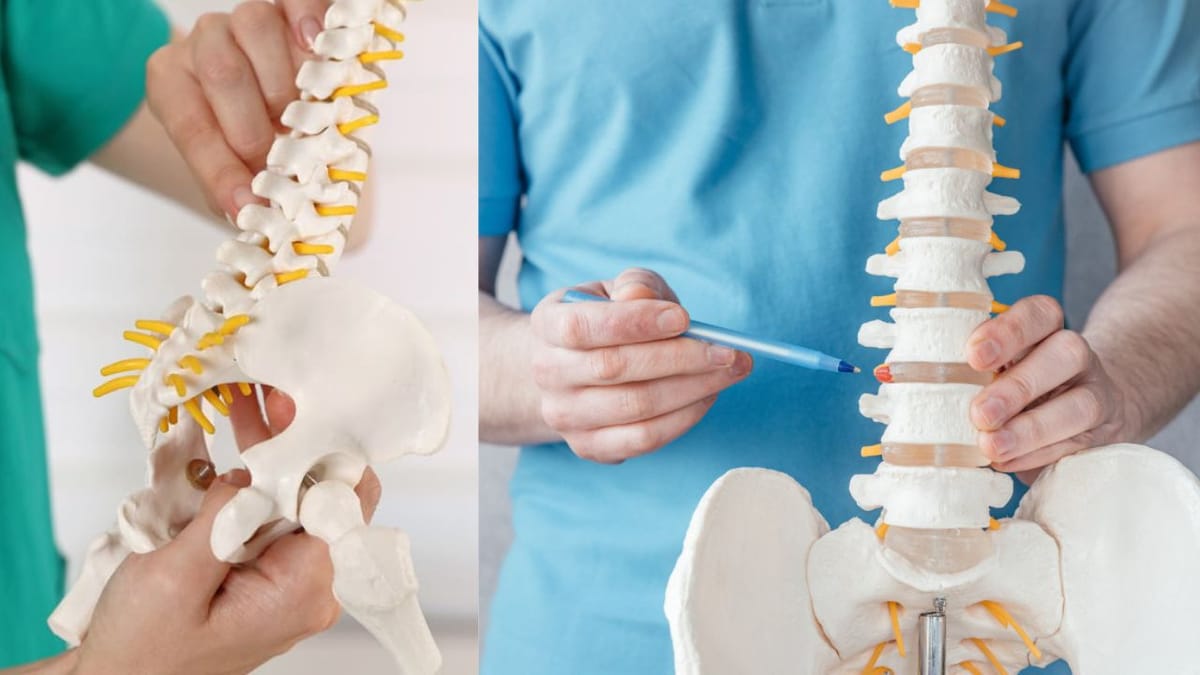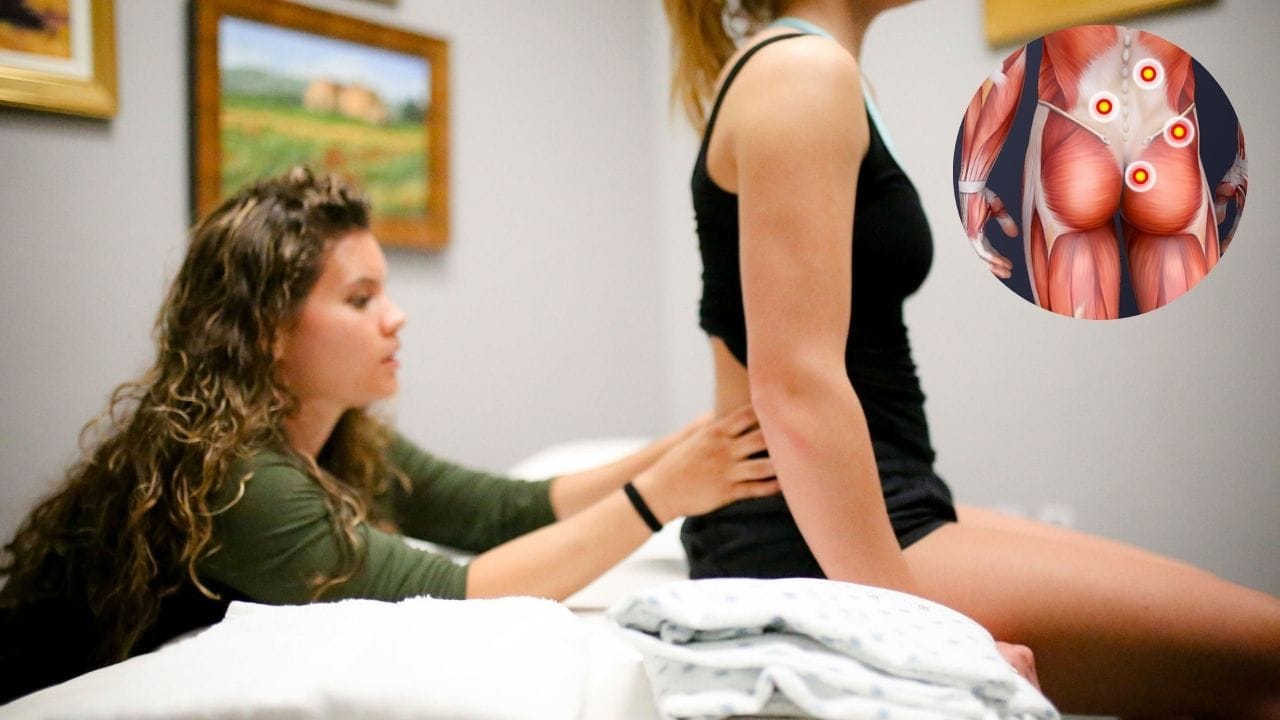Which Doctor to See for Coccyx Pain: Finding the Specialist
Coccyx pain can be debilitating. Learn which specialists, including orthopedic doctors and physical therapists, can help you diagnose and treat coccyx pain effectively.

Coccyx pain, commonly known as tailbone pain, can be a real pain in the... well, you know. It's that nagging, sharp, or dull discomfort right at the base of your spine that can make sitting, standing, and even walking a challenge. If you're dealing with this issue, you're probably wondering which doctor can help you kiss that pain goodbye. Let's dive into the world of coccyx pain and find out who you should see for relief.
Key Takeaways:
- Understand the types of doctors who can treat coccyx pain.
- Learn about the diagnostic processes for coccyx pain.
- Discover treatment options and when to seek medical attention.
What is Coccyx Pain?
Coccyx pain, or tailbone pain, is discomfort at the very bottom of your spine. It can result from a variety of causes, including injury, prolonged sitting, or even childbirth.

The pain can range from mild to severe and can significantly impact your daily activities.
Identifying the Symptoms
The primary symptom of coccyx pain is a localized ache in the tailbone area, especially when sitting or with direct pressure. You might also experience a shooting pain when transitioning from sitting to standing. If these symptoms sound familiar, it's time to consider which doctor can best address your discomfort.
General Practitioner: Your First Stop
Your journey to address coccyx pain often begins with a visit to your general practitioner (GP). They are well-equipped to perform an initial assessment and can refer you to a specialist if necessary. Your GP will review your medical history, ask about the intensity and duration of your pain, and conduct a physical examination.
When to See an Orthopedist
An orthopedist specializes in the musculoskeletal system. If your GP suspects that your coccyx pain is related to the bones, joints, ligaments, or tendons, they may refer you to an orthopedic doctor. These specialists can provide more targeted treatments and may suggest imaging tests like X-rays or MRIs.
The Role of a Physiatrist
Physiatrists, or rehabilitation physicians, focus on restoring function to people with pain.

If your coccyx pain is affecting your ability to perform daily tasks, a physiatrist can create a personalized treatment plan that may include physical therapy, exercises, and pain management techniques.
Consulting a Pain Management Specialist
For chronic coccyx pain that doesn't respond to initial treatments, a pain management specialist can be your ally. They have a range of tools at their disposal, from medications to nerve blocks, to help you manage your pain effectively.
Physical Therapists: Hands-On Care
Physical therapy is often a key component of coccyx pain treatment. A physical therapist can teach you exercises to strengthen the muscles around the coccyx, improve your posture, and alleviate pain. They can also provide hands-on treatments like massage or manipulation.
Chiropractic Care for Coccyx Pain
Chiropractors focus on the alignment of the spine and can offer adjustments to relieve coccyx pain. Chiropractic care emerges as a promising and holistic approach to alleviate coccyx pain, addressing not just symptoms but the root causes as well.

Chiropractors specialize in musculoskeletal issues and offer non-invasive methods to address coccyx pain.
Chiropractic Techniques
Chiropractic care for coccyx pain involves a variety of techniques aimed at restoring alignment and reducing inflammation. Manual adjustments, commonly known as spinal manipulations, gently realign the spine, including the coccyx, promoting natural healing. Soft tissue manipulation, massage, and stretching exercises may also be incorporated to improve flexibility and alleviate muscle tension in the affected area.
Tailored Treatment Plans
One of the key strengths of chiropractic care is its personalized approach. Chiropractors assess each patient individually, considering their medical history, lifestyle, and specific coccyx pain triggers. This allows for the development of tailored treatment plans that address the unique needs of the individual, ensuring a comprehensive and effective approach to pain management.
Addressing Underlying Issues
Chiropractors not only focus on providing symptomatic relief but also aim to identify and address the underlying issues contributing to coccyx pain. Poor posture, spinal misalignments, and muscle imbalances are among the factors that can be targeted through chiropractic adjustments and therapeutic exercises, promoting long-term recovery.
Complementary Therapies
In addition to manual adjustments, chiropractors may recommend complementary therapies to enhance the healing process. This may include lifestyle modifications, ergonomic adjustments, and home exercises to empower individuals with tools for self-care and prevention of future coccyx pain episodes.
The Importance of Proper Diagnosis
Before any treatment begins, obtaining an accurate diagnosis is crucial. This may involve a physical exam, discussing your symptoms in detail, and possibly imaging tests. A correct diagnosis ensures that you receive the most effective treatment for your specific condition.
Imaging Tests: Seeing the Unseen
Imaging tests like X-rays, CT scans, or MRIs can provide a clearer picture of what's happening with your coccyx. These tests can reveal fractures, dislocations, or other abnormalities that may be causing your pain.
Non-Surgical Treatment Options
Many cases of coccyx pain can be treated without surgery. Options include anti-inflammatory medications, cushioning to relieve pressure on the tailbone, and lifestyle modifications. Your doctor will guide you through these non-invasive approaches first.
When Surgery Might Be Necessary
In rare cases, if non-surgical treatments fail to provide relief, surgery to remove part or all of the coccyx (coccygectomy) may be considered. This is typically a last resort and requires careful consideration and consultation with a specialist.
The Impact of Lifestyle Changes
Simple lifestyle adjustments can make a significant difference in managing coccyx pain. This includes using coccyx cushions, adjusting your sitting posture, and avoiding prolonged periods of sitting.
Pregnant women often experience coccyx pain due to hormonal changes and the added weight of carrying a baby. Obstetricians or gynecologists can provide advice and treatment options to help manage this pain during pregnancy.
Alternative Therapies: Are They Worth Trying?
Some people find relief from coccyx pain through alternative therapies like acupuncture or yoga. While these methods may not work for everyone, they can be a valuable part of a comprehensive pain management plan.
The Role of Diet and Nutrition
Believe it or not, what you eat can impact your coccyx pain. A diet rich in anti-inflammatory foods may help reduce inflammation and pain. Consulting with a nutritionist can provide you with a tailored diet plan.
Keeping a pain diary can be an invaluable tool for you and your doctor. By tracking when your pain occurs and what activities exacerbate it, you can better understand your triggers and the effectiveness of your treatment plan.
When to Seek Immediate Medical Attention
If your coccyx pain is accompanied by fever, unexplained weight loss, or severe symptoms that interfere with your daily life, it's important to seek immediate medical attention. These could be signs of a more serious underlying condition.
Summary
Coccyx pain can be a complex condition to manage, but with the right medical guidance, it's possible to find relief. Start with your general practitioner, who may then refer you to a specialist like an orthopedist, physiatrist, or pain management expert. Physical therapists and chiropractors can also play a crucial role in your treatment. Remember, proper diagnosis, a comprehensive treatment plan, and lifestyle changes are your best allies in overcoming tailbone pain.
FAQs
Q: Can coccyx pain go away on its own?
A: Yes, coccyx pain, also known as coccydynia, can often go away on its own, depending on the cause and severity. In most cases, coccyx pain results from minor injuries, strain, or prolonged sitting, and it typically resolves within a few weeks with proper self-care. Here are some factors to consider:
1. Mild Cases of Coccyx Pain
- Pain caused by prolonged sitting, poor posture, or minor trauma often improves with simple lifestyle changes like using a cushion for support or adjusting your sitting posture.
- Avoiding activities that worsen the pain and using over-the-counter pain relievers like ibuprofen can also help.
2. Moderate to Severe Pain
- If the coccyx pain is due to a more significant injury, such as a fall, or an underlying condition like arthritis or a tailbone fracture, recovery may take longer and might require medical attention.
- Physical therapy, targeted exercises, or anti-inflammatory medications may be recommended.
3. When to See a Doctor
- If the pain persists for more than a few weeks, worsens over time, or is accompanied by other symptoms like numbness, fever, or difficulty sitting, consult a healthcare professional. Chronic coccyx pain may require more advanced treatments, such as injections or, in rare cases, surgery.
Self-Care Tips:
- Use a coccyx cushion or donut-shaped pillow for sitting.
- Apply heat or cold packs to reduce discomfort.
- Maintain good posture to minimize pressure on the tailbone.
In summary, while coccyx pain can often resolve on its own, the timeframe and treatment depend on the underlying cause. Paying attention to your body and seeking medical advice if the pain lingers is the best way to ensure a smooth recovery.
Q: How long does it typically take for coccyx pain to heal?
A: The healing time for coccyx pain can vary widely depending on the cause and severity. Some people may find relief within a few weeks, while others may experience pain for several months or longer.
Following your doctor's advice and treatment plan can help speed up the recovery process.
Q: Are there any exercises I can do to relieve coccyx pain?
A: Yes, there are several exercises you can try to help relieve coccyx pain. Here are a few that can target the area and alleviate discomfort:
- Pelvic Tilts:
- How to do it: Lie on your back with your knees bent and feet flat on the floor. Tighten your stomach muscles and push your lower back into the floor while tilting your pelvis upwards. Hold for a few seconds and then relax. Repeat 10-15 times.
- Benefits: This exercise strengthens the muscles around the lower back and pelvis, which can help reduce pressure on the coccyx.
- Knee-to-Chest Stretch:
- How to do it: Lie on your back with your knees bent. Bring one knee towards your chest, holding it with both hands for 20-30 seconds. Switch legs and repeat.
- Benefits: This stretch helps loosen the muscles in the lower back and hips, relieving pressure around the coccyx area.
- Bridge Exercise:
- How to do it: Lie on your back with your knees bent and feet flat on the floor. Tighten your core and lift your hips off the ground until your body forms a straight line from your shoulders to your knees. Hold for a few seconds and lower back down.
- Benefits: Strengthens the glutes, hamstrings, and lower back, supporting the pelvis and reducing strain on the coccyx.
- Cat-Cow Stretch:
- How to do it: Start on all fours with your wrists directly under your shoulders and knees under your hips. Inhale and arch your back, dropping your belly towards the floor (cow). Exhale and round your back, tucking your chin to your chest (cat). Repeat for 10-15 breaths.
- Benefits: This exercise improves flexibility and mobility in the spine, relieving tension in the lower back and coccyx.
- Seated Forward Fold:
- How to do it: Sit on the floor with your legs extended straight in front of you. Slowly bend forward from the hips, reaching towards your feet. Hold for 20-30 seconds, then slowly come back up.
- Benefits: This stretch helps release tension in the lower back and hamstrings, reducing pressure on the tailbone.
Important Tip: Always listen to your body. If an exercise causes sharp or severe pain, stop immediately and consult a healthcare professional. Also, consider using a cushion or cushion seat to avoid sitting directly on the coccyx for extended periods.
Regularly performing these exercises, combined with proper posture and avoiding prolonged sitting, can help manage and reduce coccyx pain over time.
